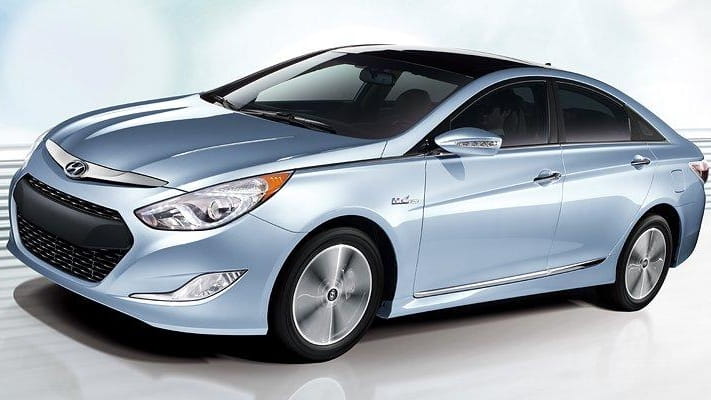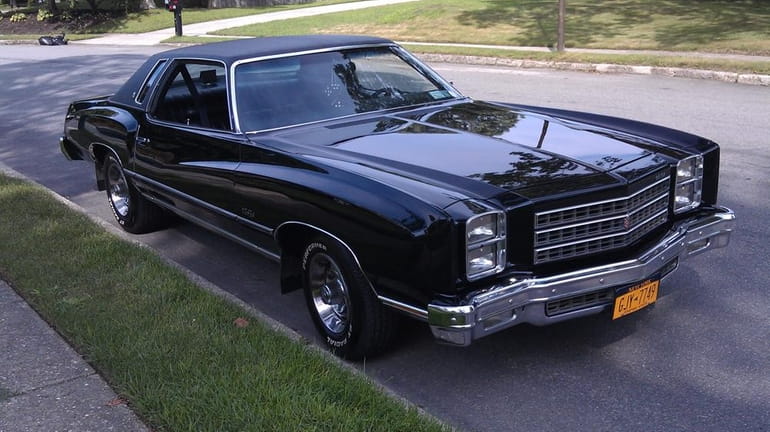2011 Hyundai Sonata Hybrid: Technology in, performance out

The 2011 Hyundai Sonata Hybrid in electric blue. Credit: HyundaiUSA.com
Overreaching is as much of a problem in automotive engineering and design as it is in politics. Consider the 2011 Hyundai Sonata Hybrid sedan.
The Sonata Hybrid is one of six new Sonata models, along with the base GLS, the GLS PZEV (partial zero-emissions vehicle, designed to meet tough California Air Resources Board clean-air standards), the mid-level SE, the top-grade Limited and the California top-grade Limited PZEV.
I'd buy any of the non-hybrid Sonata sedans before I'd spend $3,000 to $6,000 more for the Sonata Hybrid, depending on the equipment level of the non-hybrid sedan chosen.
That is not because I think gas-electric hybrid technology is over-hyped, though it is. It is because the Sonata Hybrid fails where the non-hybrid siblings so beautifully, pleasingly deliver.
The conventionally powered Sonata sedans are wildly successful in the retail market because they all greatly exceed customer expectations. Both exterior and interior design are stunningly attractive, arguably best in class for mid-size family sedans. Interior materials and fit and finish are all high-quality. The standard 2.4-liter in-line four-cylinder engine delivers a maximum 200 horsepower and 186 foot-pounds of torque. And it does that using regular gasoline at the rate of 24 miles per gallon in the city and 35 miles per gallon on the highway.
The base Sonata GLS sedan (2012 pricing) starts at $19,695. The base Sonata Hybrid sedan (late-2011 pricing) starts at $25,795.
But other than bragging rights for offering the global automobile industry's most advanced lithium polymer battery, the Sonata Hybrid gives little to the customer, especially in terms of on-road performance at high elevations. In that environment, the car loses anything approaching zoom or oomph. It literally struggles. For that matter, it moans and groans when trying to accelerate in the lowlands, too.
The Sonata Hybrid's battery, developed in cooperation with South Korea's LG Electronics, is a notable achievement. It uses a polymer gel in the electrolyte — the conducting medium in which the flow of current is accomplished by the movement of matter in the form of ions.
The gel allows for a thinner, lighter battery casing. Thinner, lighter casings yield more room for people and cargo. The gel polymer batteries also deliver the same power as — and in some cases, more power than — traditional nickel-metal hydride batteries, used in most rival hybrid vehicles, with 25 percent less weight, 40 percent less volume and 10 percent more efficiency.
Translation: The LG-Hyundai gel polymer batteries can do more than rival batteries — for example, hold their charges longer — while taking up less space and fitting more easily in the vehicles in which they are installed.
That is a major breakthrough in electric vehicle propulsion, and LG and Hyundai are to be congratulated for a solid win in battery technology.
The genius of the LG/Hyundai battery is lost, however, in its application in the Sonata Hybrid — a parallel hybrid in which there is a constant transfer of power between the car's internal combustion and electric power systems. The transfer is clumsy, noisy. Net horsepower is boosted from 200 to 206. Fuel savings rise to 35 miles per gallon in the city and 40 on the highway. But the overall jerky, noisy performance of the Sonata Hybrid, especially on uphill climbs, leaves little inclination for celebration.
I don't like this one. I again congratulate LG and Hyundai on the development of their gel polymer battery. But a car, presented for retail consumption, has to be more than a science project.

